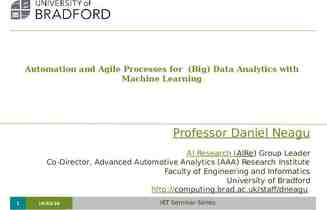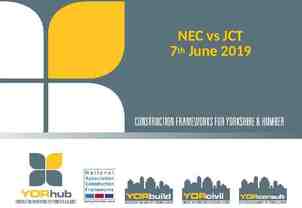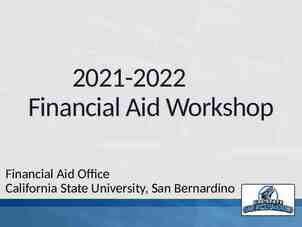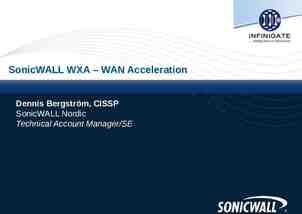Document No: Source: Contact: GSC-21 018 IEC Michael Mulquin
20 Slides3.97 MB

Document No: Source: Contact: GSC-21 018 IEC Michael Mulquin Gennaro Ruggiero Agenda Item: 4.04 IEC - using a Systems Approach to develop Smart City standards Michael Mulquin, Vice-Chair IEC SyC Smart Cities Gennaro Ruggiero, Secretary IEC SyC Smart Cities 26-27 September 2017 HOSTED BY

Why a Systems Approach? Products become multifunctional A phone years ago A phone today Music, photos, video, GPS, Internet 2G, 3G, 4G, WIFI, Bluetooth, NFC Touch screen, battery, USB, HDMI Accelerometer, gyroscope, proximity sensor . and you can still make a call with it ! An ever increasing number of technologies and standards are involved Pg 2

Why a Systems Approach? Complexity of Technologies Multiplicity and convergence of technologies Large-scale infrastructures Multiplicity and convergence of technologies Need for inter-operability Large-scale infrastructures Need for inter-operability Many new and emerging markets Many new and emerging markets An ever increasing number of technologies and standards are involved An ever increasing number of technologies and standards are involved Pg 3 Pg 3 26-27 September 2017

How IEC is using a systems approach to standards SyC Smart Cities SyC Smart Energy SyC AAL SyC LVDC Systems Work@IEC Pg 4 26-27 September 2017

The IEC Systems Approach IMPORTANT CONCEPTS 1. 2. 3. 4. Collaborative Iterative Maintain & Organize Data Traceability “Complex Systems with complex problems need a systems approach” Pg 5 26-27 September 2017

The initial steps NEEDS TERMS BENEFICIARY STORIES STAKEHOLDERS HIGH LEVEL USE CASE “Important to understand the traceability” Pg 6 26-27 September 2017

Beneficiary stories The aim of this step is to collect information about the system-of-interest from the beneficiaries' viewpoint - WHY this system-of-interest will exist and WHAT is meant to do. (The system-ofinterest is a black-box for its beneficiaries.) Such information is captured in form of stories. Ideally, each story is physical, functional and quality (or non– functional) need that a system-of-interest must be able to perform or demonstrate Pg 7 NEEDS TERMS BENEFICIARY STORIES STAKEHOLDERS 26-27 September 2017

High level Use Case Beneficiary Story As a city student, When I am at school, I want to breath clean air, So I can stay healthy In the classroom/ building monitor Use Case UC-ID 001 Use Case Name: Monitor classroom air quality Scope/Objective: Ability to monitor the air quality in the classroom environment. Narrative: This use case defines the scenario in which a collection of Actors (technology and people) interact to provide information about the quality of the air in the classroom. Various characteristic of the air is captured by different technology and monitored. This information is monitored and analyzed by specific actors. Actors: student, teacher, school maintenance manager, facility staff, Oxygen sensors, temperature sensor, particle sensor, data collector/gateway, air quality monitor/analytic system Pg 8 26-27 September 2017

446 Energy Standards 248 H/B Standards 93 Water Standards 264 City Service Standards Welcome To IEC Smart City Population: 1 814 Standards 87 Healthcare Standards 9 375 ICT Standards 141 Transport Standards

History IEC/SMB agreed to set up a Systems Evaluation Group (SEG) on Smart Cities in June 2013. First meeting December 2013. Finalised report recommending the setting up of a Systems Committee (SyC) on Electrotechnical aspects of smart cities in August 2015. IEC organises the World Smart City Forum in Singapore, July 2016, to get other SDO’s to cooperate on Smart Cities. The first meeting of SyC takes places in conjunction with the WSCF. Plenary in Tokyo February 2017. Working group meetings in Shanghai June/July 2017. Pg 10 26-27 September 2017

IEC Systems Committee on Electrotechnical aspects of smart cities To foster the development of standards in the field of electrotechnology to help with the integration, interoperability and effectiveness of city systems. This will be done: - by promoting collaboration and systems thinking between IEC/TCs, the SyC and other SDOs in relation to city system standards; - by undertaking systems analysis to understand the needs for standards and assess new work item proposals related to city systems; - by developing systems standards where needed and by providing recommendations to existing SyCs, TCs/SCs and other SDOs Pg 11 26-27 September 2017

Where the SyC sits .? IEC TCs and SCs Smart Cities IEC SyC smart cities Industry Pg 112 Other SDOs 26-27 September 2017

How the SyC works Industry IEC TCs and SCs Reference architecture Cities WG 3 CAG strategy Market Relations WG 2 CAG coordination SDOs SDOs Terminology WG 1 26-27 September 2017

Prioritisation and coordination Highly relevant Relevant IMPORTANCE Value for citizens Value for enterprise and business Value for city administration Value for smart city solutions providers WHO SHOULD LEAD Electrotechnical Systems approach Pg 14 26-27 September 2017 Irrelevant Unknown

An An example standard City Service Continuity against disasters - the role of the electrical supply Proposed by Japan and recently agreed for development by the SyC Participating Member countries Pg 15 26-27 September 2017

How the SyC is dealing with this Industry IEC TCs and SCs Reference architecture Cities WG 3 CAG strategy Market Relations WG 2 CAG coordination SDOs SDOs Terminology WG 1 26-27 September 2017

Thank you For more information, please contact: Michael Mulquin [email protected] Gennaro Ruggiero [email protected] IEC: http://www.iec.ch/ IEC SyC Smart Cities: http://www.iec.ch/smartcities/ Pg 20 26-27 September 2017









